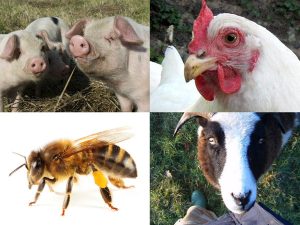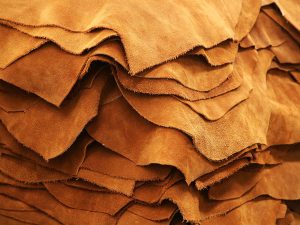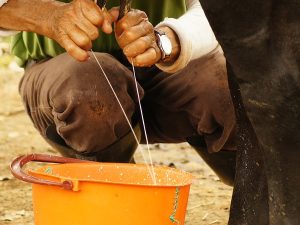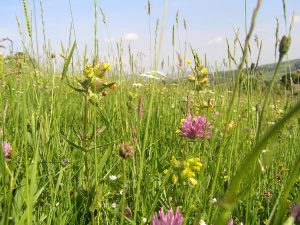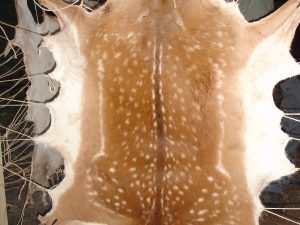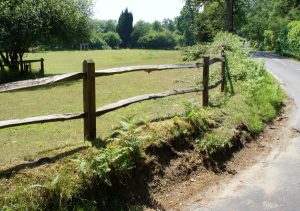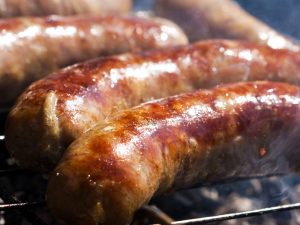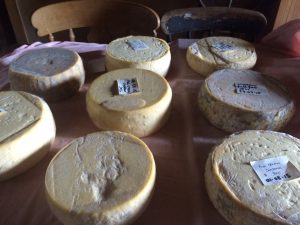Cattle - introduction

“A cow out on grass is just an incredible thing to behold… Cows and other ruminants can do things we just can’t do. They have the most highly evolved digestive organ on the planet, called the rumen. And the rumen can digest grass. It takes grass, cellulose in grass, and turns it into protein, very nutritious protein. We can’t do that.” – Michael Pollan
Contents
What are cattle?
They are those familiar four-legged bovine animals, kept for meat or dairy, or both – plus their extremely useful by-products, leather and dung. Oxen, the term used for any trained bovine, have also performed an important role as draught animals throughout history and even today throughout the world they still outnumber horses as the primary draught animal. The ancient forerunner of almost all domestic cattle was the Aurochs, which roamed Europe, Africa and Asia, and was ancestor to all European breeds, plus the African Zebu cattle. The Aurochs became extinct in the 17th century.

Modern breeds have been continually selected for either beef or dairy, which when taken to extremes can begin to cause problems. The Belgian Blue, for example, has been bred to be such an enormous meat animal that caesarians are required to deliver the calves due to the ‘double-muscling’ gene both increasing calf birth weight and reducing the pelvic size of females. Holsteins and Friesians on the other hand, have been selected for milk, so there is less meat produced, but dairy bred calves are still predominantly reared for beef or veal.

Smallholders have the opportunity to preserve breeds, and to choose those breeds on the basis of their hardiness and ability to provide both milk and meat. Dexter cattle are an example of a breed that fits these criteria well. They are the ideal smallholder cow, as they are small, hardy and dual-purpose. Below we will talk about the benefits of using hardy, traditional breeds for smallholders.

What are the benefits of keeping cattle?
- traditional / rare breeds are usually easier to manage, with less to go wrong; they tend to be hardier, can be outside all year, and breed for longer (Belgian Blues commonly breed for 7 years, Dexters for 15)
- they can be grass-fed all year round, sometimes without even needing hay (and if they do, it can usually be obtained locally, without having to use grains that have often travelled long distances)
- a few cattle on a smallholding can be looked after much better than those in a large herd. If you have 100 cows, you may not spot if one is unwell. If you have 4, and especially if you hand-milk, you will
- vaccinations can be reduced for small herds (see below). Diseases are often caused by overcrowding
- they produce manure – an excellent addition to the soil on any smallholding
- cattle can utilise land that’s not much use for anything else. Traditional cattle are sometimes used for conservation grazing. If mixed with other livestock, the land can be improved, animal health preserved and yields maximised. For example, cattle like long grass, and may leave cow parasites in their dung. Sheep prefer the shorter grass after cows, and have no problem with cow parasites. Then chickens can eat weed seeds and insect pests, and scatter the dung around the land
What can I do?
Preparation: cattle are big animals and therefore need space, but they don’t require much work. Make sure you have storage space for hay. It’s cheaper to buy hay in bulk straight off the field and store it yourself, than to buy it after it’s been stored somewhere else. If you have the shelter of trees and hedges, you don’t necessarily need a shed, but if you don’t, you can build a 3-sided shed for them to find shelter from the worst weather. You’ll need a trailer or a friendly local farmer / smallholders’ group to borrow one from. Find one of these groups first if you can, and go and see cattle kept on a small scale, or go WWOOFing on a farm or smallholding that has cattle.

Care: with beef cattle, if they can live outdoors all year, they don’t need to be let out and locked away every day. You might sometimes have to trim feet or deal with a wound, but apart from making sure they always have water, some years there might be virtually nothing to do. But occasionally you might have a situation that takes up your whole day out of the blue, for example if a cow or bull gets caught in a fence (you’ll have to rescue it, tend wounds, fix the fence etc.), so you have to be prepared for that. There’s a lot more work if you’re milking them. You can leave calves with their mothers, or just separate them for a while for milking. Think about rotating cattle with other livestock (see ‘benefits’). You can’t keep just one cow, but you could keep a mother and calf. Calves can be sent to slaughter at 2, and the mother could have another calf by then. Find a local bull that you can borrow for breeding. You will sometimes need to restrain a cow, for example for vaccination. This can be done using a ‘cattle crush’, which can be expensive, but again, can be borrowed. With just a few cows, they will be tamer, and can be led with a halter and held between 2 gates, if they have some nice food to distract them.

Meat: legally, cattle can be slaughtered for home consumption but the current TSE regulations often make this impractical so it is easier if they are taken to an approved abattoir; but you may be able to do your own butchery. Find a local friendly abattoir – they’ll be used to large farmers, but could fit you in with individual beasts. If you want to sell the meat, you have to have your premises inspected by your local Environmental Health dept. (it doesn’t have to be all stainless steel – just clean), and you have to have approved labelling. From a decent-sized cow you could expect to get 3-400kg of meat. You’d need a refrigerated van to get your meat home from the abattoir, but again you could borrow one from a friendly farmer / smallholders’ group.
Dairy: see here.

Vaccinations: there are 8 standard vaccinations that can be given to dairy herds, and they can still be called organic. As mentioned above, these vaccinations can be reduced for small herds living outdoors on a smallholding. Everyone has to do TB testing (small injections every year for the first 3 years, then the regularity depends on local conditions – it could be around once every 4 years). Plus there could be occasional compulsory vaccinations nationwide if there’s a scare (e.g. blue tongue).

Paperwork: you need a holding number for your site (see here), and a herd number from the APHA. Tell them what you’re going to keep, and they’ll send you lots of information. It’s aimed at big farmers, but if you wade through it, there’s lots of useful stuff. You will also need to register with and report all movements to BCMS within 7 days. When you buy a cow, it will come with ear tags (one in each ear) and a ‘passport’. Make sure the tag numbers match the number of the passport. You will also need to register with a vet. You have to keep a medication sheet – you can make your own, or get one from an agricultural supplier. It’s a legal requirement to record medications, which animals received them, dates etc.
If you intend to breed cattle it is important to source ear tags from specialist suppliers (find them online – tell them your herd number and they will send them out to you) prior to the birth or immediately after. By law calves must be ear tagged within 36 hours for dairy and 20 days for beef cattle. A cattle passport application must be received by BCMS within 27 days from the birth otherwise the animal cannot legally leave the holding for either beef or breeding. If you have pedigree cattle, there’s extra paperwork from the society that registers the pedigree.
Specialist(s)
Thanks to Robert Rose of Rosewood Farm for information.
The specialist(s) below will respond to queries on this topic. Please comment in the box at the bottom of the page.

Robert Rose, fuelled by a life-long passion for cattle & grasslands, is on a mission to produce genuinely sustainable food from the most important floodplain meadow landscape remaining in the UK. Today we provide holistic grazing services to farmers & wildlife conservation organisations, and Rosewood Farm delivers wildlife-friendly beef direct to health & environmentally conscious consumers throughout the UK by mail order.


